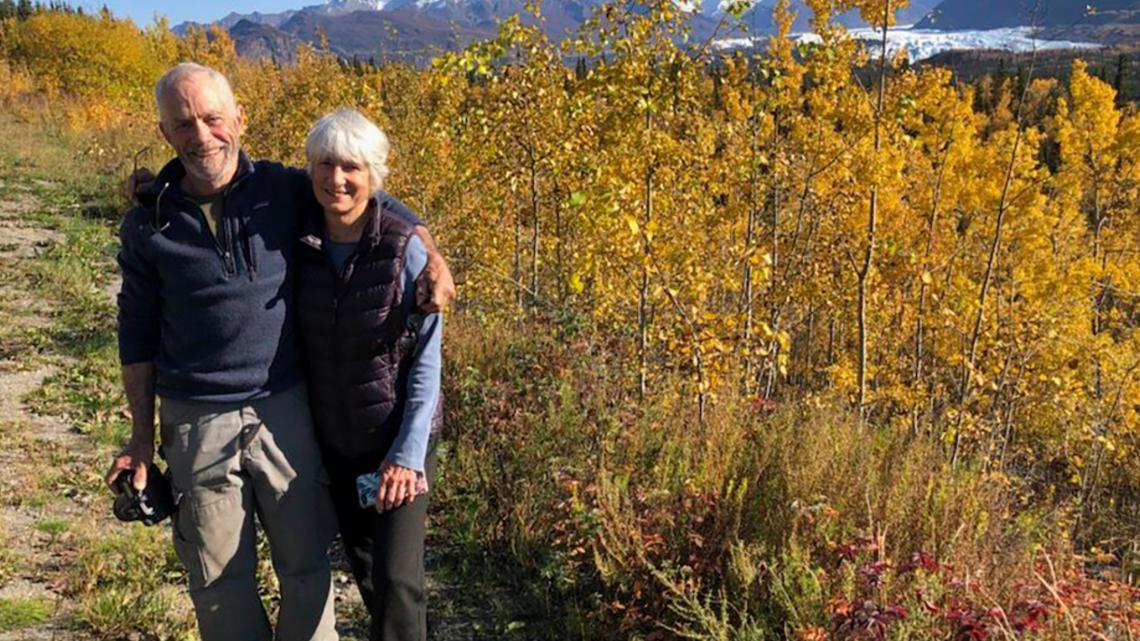ANCHORAGE, Alaska — The family of an Alaska man fatally attacked by an enraged moose trying to protect her newborn twin calves said he was a nature photographer who knew the risks of taking photos in the wild and died doing what he loved.
Even though there have been some calls for the moose to be killed, Dale Chorman's family does not want the moose put down because she was only protecting her calves.
Chorman, 70, and a friend were attempting to find the moose and calves to photograph them Sunday when the moose came charging out of the brush, said Chorman’s friend, Tom Kizzia, a Homer, Alaska, author and journalist.
“They both turned to run, and the friend looked back and saw Dale lying on the ground with the moose standing over him,” Kizzia told The Associated Press by phone.
“There was no evident trampling, and they didn’t see any signs of trauma later when they recovered his body,” he said. “I think the medical examiner’s going to try to figure out exactly what happened, whether it was just single blow in the terrible wrong place or something.”
The friend sought help, and by the time medics arrived, Kizzia said the moose had faded back into the woods.
Chorman’s son, Nate Spence-Chorman, posted on social media that Dale was “a loving husband to Dianne, a great father to me and (as you know) a fantastic friend to many.”
The fatal attack occurred on Chorman’s 3-acre (1.2-hectare) property just east of Homer, where every spring moose give birth in a dense scrub forest of alder and elderberry.


Chorman was a builder and carpenter by trade, but also loved being around wildlife. He was a naturalist, an avid birder and a wildlife guide who loved sharing his photos.
“This was not a hapless fool stumbling into danger — this was a person who went out looking for a great photo, knowing the risks, and got caught in a dangerous moment,” his son wrote.
The moose should not be killed, Spence-Chorman wrote. “The ungulate mother need not die. She was just protecting her offspring.”
Even though the death was tragic, Spence-Chorman said his father would have accepted this outcome.
“The truth is, he died doing what he loved,” he wrote.
The Alaska Department of Fish and Game normally receives reports of aggressive or unusual moose behavior, said Cyndi Wardlow, a regional supervisor in the Department of Wildlife Conservation.
“In this case, we’re obviously very concerned about public safety,” she said.
“If there was an animal that was behaving in a way that continued to present a public safety threat, then we could possibly put that animal down but we’re not specifically pursuing that course,” she said.
Wardlow encouraged everyone, including the many summer tourists just beginning to arrive in Alaska, to be aware of wildlife and their surroundings.
In the case of moose, the largest in the deer family, small adult females can weigh up to 800 pounds (360 kilograms) with males twice that. They can also stand up to 6 feet tall (1.8 meters) at the shoulder.
It's estimated there are up to 200,000 moose in Alaska.
This is the second fatal moose attack in Alaska in the last three decades.
In 1995, a moose stomped a 71-year-old man to death when he was trying to enter a building on the campus of the University of Alaska Anchorage. Witnesses said students had been throwing snowballs and harassing the moose and its calf for hours, and the animals were agitated when the man tried to walk past them.
Dale Chorman grew up in Painesville, Ohio, but hitchhiked to Alaska in the 1980s, his son said in an email to the AP. He was well-traveled, spending time across the Americas, Europe, Asia and visited Antarctica.
He met his wife, Dianne, when she came to Alaska to view bears and he was guiding at a nearby river lodge.
Chorman's professional guiding work was primarily focused on brown bear photography, but he was passionate about all wildlife, especially birds, his son said. He could identify many species of birds by their calls alone and sometimes taught “birding by ear” classes in Homer.
Homer is located on Alaska's Kenai Peninsula, about 220 miles (355 kilometers) south of Anchorage.



